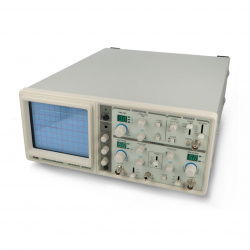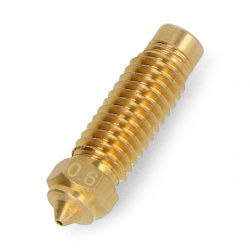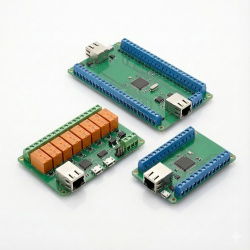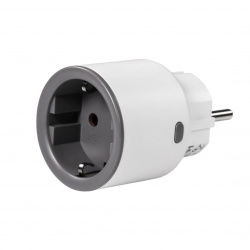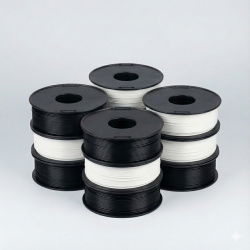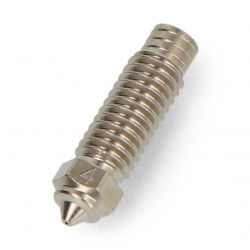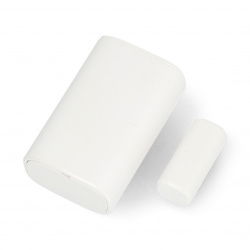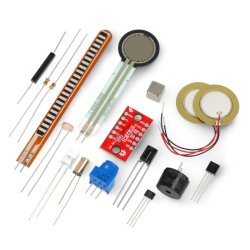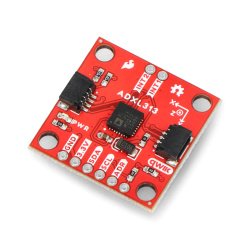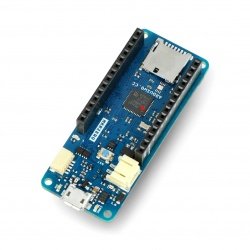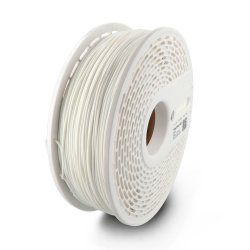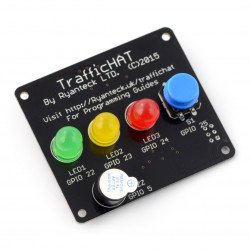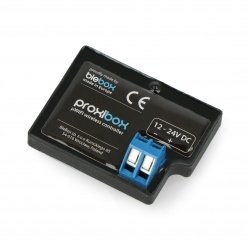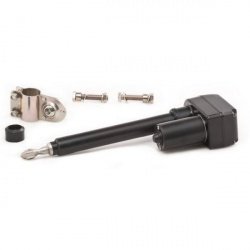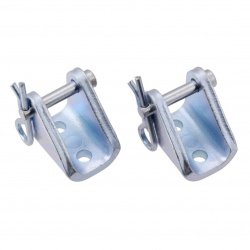When making prototypes of various devices, specific assumptions are often made about the structure and its practical functioning. Such projects may include applications such as automatic sliding doors, magnetic railways, gantries or a table equipped with electric height adjustment. To implement such applications, linear electric motors are most often used, which convert rotary motion into linear motion, in which the moving element, in analogy to the rotor performing a rotary motion, moves in a straight line in two directions. Linear electric actuators operate on this principle. The Botland store offer includes linear actuators powered by DC voltage of 12V, 24V and 36V, varied in terms of torque, linear speed, as well as the maximum range of the movable element extension, so you will be able to make the right selection of an electric actuator with parameters consistent with project assumptions. Please check out the details of our wide offer at the Botland Store and feel free to ask us for professional advice if you need!
Linear actuators
Electrical Actuator Super Power Jack 2000N 7,5mm/s 24V - 44cm stroke
Super Power Jack electric actuator from Elektrobim. Powered by 24 V, it has a lifting capacity of 2000 N (200 kg) . It operates at 7.5 mm/sec and has a maximum current...Linear Actuator Driver FDI 24 V + remote
Versatile controller with the wired remote control, designed for the FDI actuators. It also allows you to control any actuator with a voltage of 24 V DC and a current not...Driver for sliding gates KSE380/KSE180
Control unit for sliding gates KSE180 / KSE380 with a radio receiver with a frequency of 433.92 MHz.Linear Actuator CAR+ 1000N 10mm/s 12V - 20cm stroke
A linear electric actuator specially designed for 12 V installations. The maximum current consumption is 3 A. The device works at a speed of approx. 10 mm/s (no load), its...- Reduced price
- SPECIAL OFFERS
Linear Actuator Super Power Jack Mini 1000N 5,4mm/s 12V - 20cm stroke
Electric actuator powered by 12 V . The device has a lifting capacity of 1000 N (100 kg) , operates at a speed of 5.4 mm/s. Maximum current consumption is 1.5 A. An impulse...Panel/wall controller for electric motors 12-48V DC 32 A RC-LCD - Elektrobim
The RC-LCD is a panel wall controller manufactured by Elektrobim. It is used to control electric actuators, which are powered by 12 V to 48 V DC . The RC-LCD can be used in...Linear Actuator Mount - steel 2pcs. - Pololu 2328
The mounting bracket designed for the linear actuators from the Pololu Light-Duty series (up to 50 kg). It is made of pressed, galvanized steel. Mounting holes have a diameter...See also
- Zortrax Filaments
- DJI Inspire drones
- 24v relays
- Anet 3D printers
- Wireless mice
- Esperanza compressed air
- Outdoor LED lighting
- Syma drones
- Fluorescent filament
- DJI Phantom drones
- 2-core cables
- Power supplies 12v 10a
- Conductive paint
- DJI Mavic drones
- Compressed air to clean the keyboard
- Tablets
- RPi Wi-Fi cards
- PLA Pro filaments
- Encoders
- Intel modules & kits
- Hexbug toys
- Magnetic balls
- DJI Mavic drones - drones and accessories
- Banana Pi
- Photo traps
- Intel starter kits
- Android Box Smart TV
- 2D printers and pens
- Intel expansions & hats
- GPS trackers
- Resistors SMD 1206
- Aqara - home automation
- Smart ABS filaments
- Headphones
- String bags (zip bags)
- Vacuum forming
- STM32 books
- Books about Raspberry Pi
- Chargers
- Dobot 3D printers
- Intel - module accessories
- Electrolytic capacitors SMD
- AGM batteries
- Refill filaments
- BeagleBone power supply
- Car handles
- Alarm sirens
- Flsun 3D printers
- Tantalum capacitors SMD
- Sensors and alarms
- Flexible filaments
- Khadas VIM
- Motor capacitors
- RC cars and models
- Laminators
- Zortrax 3D printers
- Doorbells and peepholes
- Arylic sound modules
- Trilab 3D printers
- Bluetooth Speakers
- Goofoo 3D printers
- PowerBank mobile batteries
- Control equipment
- Urbicum 3D printers
- LED lighting
- Spare parts
- Webcams
- Mycusini 3D printers
- TinkerGen
- Weight meters
- Raspberry Pi 2B+
- ATMAT 3D printers
- Makeblock 3D printers
- DJI educational robots
- Silk Filaments
- Transport cases
- Orange Pi
- MakerPi 3D printers
- Sparky
- Air conditioning and heating
- Abilix Krypton
- 3D printer Artillery
- Air purifiers
- SkriWare - educational robots
- Gas soldering irons
- Exta Free - sensors and modules
- LittleBits
- Spresense Sony
- Netronix RFID modules
- Rock Pi
- AST lighting drivers
- CubieBoard
- WowWee
- Coolseer home automation
- AMK - automation and control
- Smartwatches
Linear actuators - how does it work
Linear actuators are electromechanical devices whose construction is based on small electric motors whose rotational motion is converted into rectilinear motion. In electric servomotors, the function of the drive is performed by a linear electric motor, which in its principle of operation is very similar to the classic asynchronous induction motor, in which the rotor is set in motion by a magnetic field generated by the stator due to the flow of supply current in its windings. The linear motor, on the other hand, is an induction motor whose stator has been cut in half and laid out on a plane. The ferromagnetic placed in the winding moves backwards or forwards, depending on the direction of the magnetic field force lines. It is a solution popularly used in magnetic railways (Mag Lev), as well as precise electromechanical systems, such as automatic gates. One of the most important advantages of linear actuators is the high precision of positioning the mechanism, speed of operation and constant acceleration, which are not affected by the friction force and inertia of the elements. In addition, the linear actuator automatically brakes when the drive motor is de-energized. In this situation, the actuator will continue to support the load.
Linear actuators - typical applications
One of the most popular applications of linear actuators with electric drive is control of the central lock in cars, as well as door locks in intelligent buildings. In addition, linear actuators can also be used in solar farms. Then they perform the function of manoeuvring photovoltaic panels in such a way as to set them at the right angle of incidence of sunlight to achieve the optimal operating point. They are also used in agricultural machinery. Often, control of such a device is carried out by radio, through the installed special modules supporting wireless communication. They are also used with the use of manual or automatic control - for example in response to a signal from appropriate sensors notifying about the detection of a given change.






























































































































































































































































































































